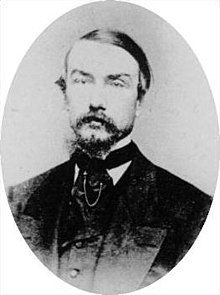
The Battle of Gettysburg was a three-day battle in the American Civil War fought between Union and Confederate forces between July 1 and July 3, 1863, in and around Gettysburg, Pennsylvania. The battle, which was won by the Union, is widely considered the Civil War's turning point, ending the Confederacy's aspirations to establish an independent nation. It was the Civil War's bloodiest battle, claiming over 50,000 combined casualties over three days.

The Battle of the Wilderness was fought on May 5–7, 1864, during the American Civil War. It was the first battle of Lieutenant General Ulysses S. Grant's 1864 Virginia Overland Campaign against General Robert E. Lee and the Confederate Army of Northern Virginia. The fighting occurred in a wooded area near Locust Grove, Virginia, about 20 miles (32 km) west of Fredericksburg. Both armies suffered heavy casualties, nearly 29,000 in total, a harbinger of a war of attrition by Grant against Lee's army and, eventually, against the Confederate capital, Richmond, Virginia. The battle was tactically inconclusive, as Grant disengaged and continued his offensive.
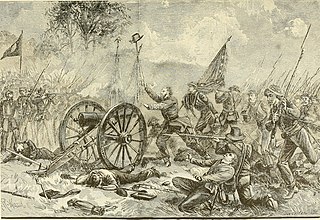
Pickett's Charge, was an infantry assault on the last day of the Battle of Gettysburg in Pennsylvania during the Civil War. Ordered by Confederate General Robert E. Lee against Major General George G. Meade's Union positions on Cemetery Hill, the attack was a costly mistake that decisively ended Lee's invasion of the north and forced a retreat back to Virginia.

Alfred Moore Scales was a North Carolina state legislator, Confederate general in the American Civil War, and the 45th Governor of North Carolina from 1885 to 1889.

Matthew Duncan Ector was an American legislator, a Texas jurist, and a general in the Confederate States Army during the American Civil War.

William Dorsey Pender was a general in the Confederacy in the American Civil War serving as a brigade and divisional commander. Promoted to brigadier on the battlefield at Seven Pines by Confederate President Jefferson Davis in person, he fought in the Seven Days Battles and at Second Manassas, Fredericksburg, and Chancellorsville, being wounded in each of these engagements. Lee rated him as one of the most promising of his commanders, promoting him to major general at twenty-nine. Pender was mortally wounded on the second day at Gettysburg.
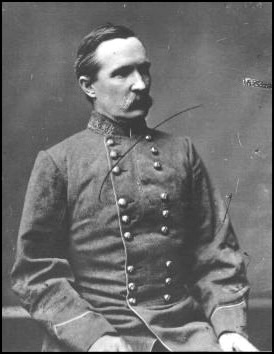
Henry Heth was a career United States Army officer who became a Confederate general in the American Civil War.

James Johnston Pettigrew was an American author, lawyer, and soldier. He served in the army of the Confederate States of America, fighting in the 1862 Peninsula Campaign and played a prominent role in the Battle of Gettysburg. Despite starting the Gettysburg Campaign commanding a brigade, Pettigrew took over command of his division after the division's original commander, Henry Heth, was wounded. In this role, Pettigrew was one of three division commanders in the disastrous assault known as Pickett's Charge on the final day of Gettysburg. He was wounded, in the right hand, during the Pickett-Pettigrew Charge on July 3, 1863, and was later mortally wounded during the Union Confederate rearguard action while the Confederates retreated to Virginia near Falling Waters, Virginia, on July 14, dying several days thereafter on July 17, 1863.
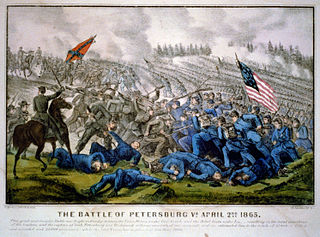
The Third Battle of Petersburg, also known as the Breakthrough at Petersburg or the Fall of Petersburg, was fought on April 2, 1865, south and southwest Virginia in the area of Petersburg, Virginia, at the end of the 292-day Richmond–Petersburg Campaign and in the beginning stage of the Appomattox Campaign near the conclusion of the American Civil War. The Union Army under the overall command of General-in-Chief Lieutenant General Ulysses S. Grant, launched an assault on General Robert E. Lee's Confederate Army of Northern Virginia's Petersburg, Virginia, trenches and fortifications after the Union victory at the Battle of Five Forks on April 1, 1865. As a result of that battle the Confederate right flank and rear were exposed. The remaining supply lines were cut and the Confederate defenders were reduced by over 10,000 men killed, wounded, taken prisoner or in flight.

The Appomattox campaign was a series of American Civil War battles fought March 29 – April 9, 1865, in Virginia that concluded with the surrender of Confederate General Robert E. Lee's Army of Northern Virginia to forces of the Union Army under the overall command of Lieutenant General Ulysses S. Grant, marking the effective end of the war.

The Battle of Globe Tavern, also known as the Second Battle of the Weldon Railroad, fought August 18–21, 1864, south of Petersburg, Virginia, was the second attempt of the Union Army to sever the Weldon Railroad during the siege of Petersburg of the American Civil War. A Union force under Major General Gouverneur K. Warren destroyed miles of track and withstood strong attacks from Confederate troops under General P.G.T. Beauregard and Lieutenant General A.P. Hill. It was the first Union victory in the Richmond–Petersburg Campaign. It forced the Confederates to carry their supplies 30 miles (48 km) by wagon to bypass the new Union lines that were extended farther to the south and west.
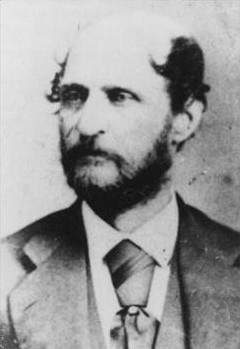
Birkett Davenport Fry was an adventurer, soldier, lawyer, cotton manufacturer, and a Confederate brigadier general in the American Civil War. A survivor of four battle wounds, he commanded one of the lead brigades during Pickett's Charge at the Battle of Gettysburg.
John Mercer Brockenbrough was a farmer and a Confederate colonel in the American Civil War.
A. P. Hill's Light Division was an infantry division in General Robert E. Lee's Confederate Army of Northern Virginia during the American Civil War. Originally including six brigades, the division's first commander starting May 27, 1862 was then Major General A. P. Hill. Major Generals William Dorsey Pender and Cadmus M. Wilcox commanded a reorganized Light Division in the Army of Northern Virginia after Hill's promotion to corps command and Pender's death at the Battle of Gettysburg, respectively.

The Third Corps, Army of Northern Virginia was a unit of the Provisional Army of the Confederate States.

William Whedbee Kirkland was a brigadier general in the Confederate States Army during the American Civil War. He was the only former US Marine to serve as a Confederate general.

William MacRae was a brigadier general in the Confederate States Army during the American Civil War.

James Keith Marshall was a Confederate Army officer during the American Civil War. Marshall commanded the wounded J. Johnston Pettigrew's brigade during Pickett's Charge at the Battle of Gettysburg and died during the assault.

William George Mackey Davis was a Confederate States Army brigadier general and blockade runner during the American Civil War. He was a lawyer and cotton speculator before the war and a lawyer in Washington, D.C., after the war.

The 34th North Carolina Infantry Regiment was an infantry regiment of the Confederate States Army during the American Civil War. As part of the Army of Northern Virginia it fought in the Eastern Theater until the surrender at Appomattox.
